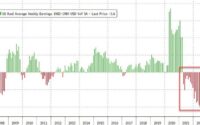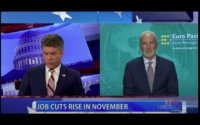Gold rallies as sticky inflation supports neutral interest rate guidance
- Gold price jumps swiftly as inflation expanded at a stable pace in July.
- United States inflation remains almost stable amid resilience in consumer spending.
- US credit card spending remained the highest ever in Q2, and delinquencies rise.
Gold price (XAU/USD) climbs sharply to near $1,930.00 as the United States Consumer Price Index (CPI) turns out persistent as expected. The monthly headline and core inflation expanded at a 0.2% pace in July, as expected by the market participants. Annual headline CPI remained lower at 3.2% than expectations of 3.3% but landed higher than the prior release of 3.0% while core inflation that excludes volatile oil and food prices softened to 4.7% against the expectations and the former release of 4.8%. It seems that the impact of falling demand from central banks starts fading.
Scrutiny of the United States inflation data for July indicates that the Federal Reserve (Fed) will keep September’s monetary policy unchanged. However, the Fed will keep the door open for further policy tightening. Meanwhile, consumer sentiment could come under pressure as mortgage rates rose to a fresh high at 7.09% this week.
Daily Digest Market Movers: Gold price jumps as inflation remains in line with consensus
- Gold price jumps strongly to near $1,930 as the US Bureau of Labor Statistics reported that monthly inflation expanded by 0.2% in July, in line with the estimates.
- Annual headline inflation rebounded to 3.2% from the previous figure of 3.0% but remained lower than the forecast of 3.3%, and core CPI softened marginally to 4.7% vs. the consensus and the former release of 4.8%.
- Gasoline prices saw a modest recovery last month, which influenced a rebound in headline inflation.
- Sticky inflationary figures indicate that the Fed would continue to remain data-dependent.
- Persistent inflation data might force Fed policymakers’ hand: Philadelphia Fed Bank President Patrick Harker and New York Fed President John Williams to change their neutral stance for September monetary policy.
- On the contrary, Fed Governor Michelle Bowman remained hawkish over interest rate guidance amid tight labor market conditions.
- After inflation data, investors would shift their focus on the Producer Price Index (PPI) for July, which will be published on Friday at 12:30 GMT.
- This week, global markets reacted strongly to the US government’s long-term debt rating downgrade by Fitch.
- Chicago Fed President Austan D. Goolsbee commented that Fitch’s downgrade won’t make any difference. However, the US 30-year mortgage rate jumped to a nine-month peak at 7.09%.
- Joel Kan, the Mortgage Bankers Association’s vice president, and deputy chief economist, pointed to Fitch’s recent downgrading of U.S. government debt, which affected all types of loans on the weekly survey, Reuters reported.
- The US Dollar Index (DXY) drops below 102.00 as investors believe that a 0.2% monthly expansion pace in inflation is in line with the Fed’s desired core rate of 2%.
- On Wednesday, Moody’s downgraded the credit rating of several small and mid-sized banks as higher borrowing costs could impact their funding strength and profitability. The credit-rating firm also warned that it might also downgrade some of the biggest lenders ahead.
- New York Fed said in its latest quarterly household debt and credit report that households increased their borrowing to its highest-ever level of $45 billion in the second quarter at $1.03 trillion. Credit card delinquencies rose to an 11-year high.
Technical Analysis: Gold price climbs to near $1,930
Gold price finds temporary support near the fresh monthly low of $1,916. The precious metal looks vulnerable and is expected to continue its downside move. After remaining consistently below the 20 and 50-day Exponential Moving Averages (EMAs), the yellow metal is declining toward the 200-day EMA around $1,907.00. Momentum oscillators are near the support region and a further downside would trigger a bearish impulse.
Interest rates FAQs
Interest rates are charged by financial institutions on loans to borrowers and are paid as interest to savers and depositors. They are influenced by base lending rates, which are set by central banks in response to changes in the economy. Central banks normally have a mandate to ensure price stability, which in most cases means targeting a core inflation rate of around 2%.
If inflation falls below target the central bank may cut base lending rates, with a view to stimulating lending and boosting the economy. If inflation rises substantially above 2% it normally results in the central bank raising base lending rates in an attempt to lower inflation.
Higher interest rates generally help strengthen a country’s currency as they make it a more attractive place for global investors to park their money.
Higher interest rates overall weigh on the price of Gold because they increase the opportunity cost of holding Gold instead of investing in an interest-bearing asset or placing cash in the bank.
If interest rates are high that usually pushes up the price of the US Dollar (USD), and since Gold is priced in Dollars, this has the effect of lowering the price of Gold.
The Fed funds rate is the overnight rate at which US banks lend to each other. It is the oft-quoted headline rate set by the Federal Reserve at its FOMC meetings. It is set as a range, for example 4.75%-5.00%, though the upper limit (in that case 5.00%) is the quoted figure.
Market expectations for future Fed funds rate are tracked by the CME FedWatch tool, which shapes how many financial markets behave in anticipation of future Federal Reserve monetary policy decisions.
[ad_2]
Source link


